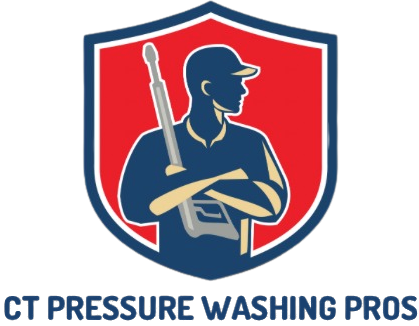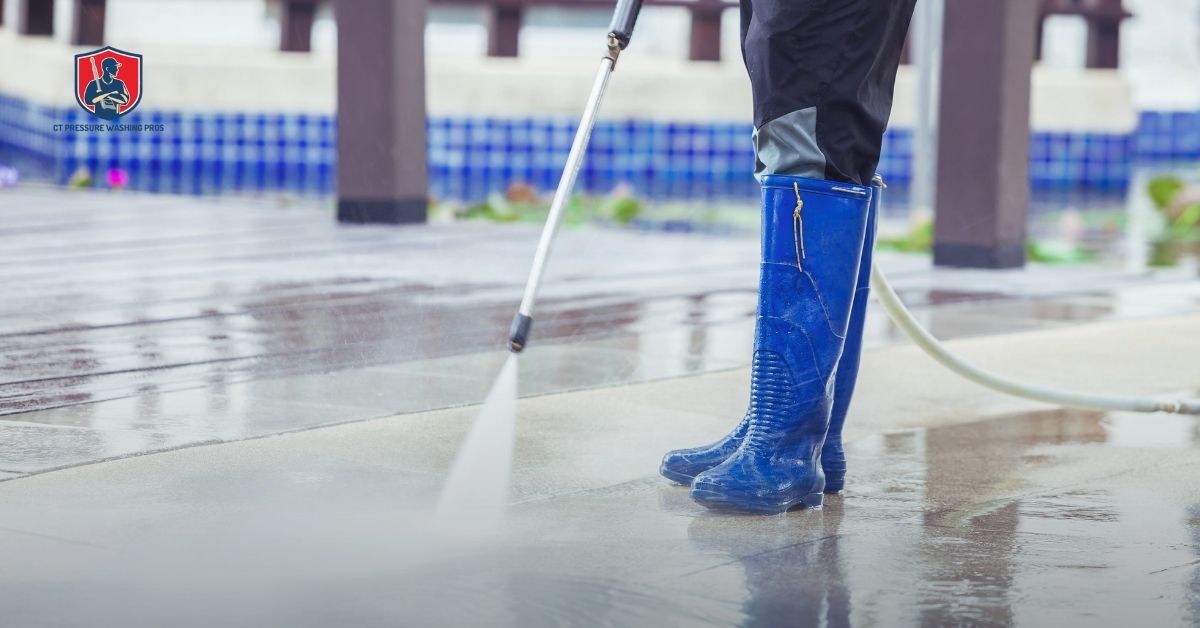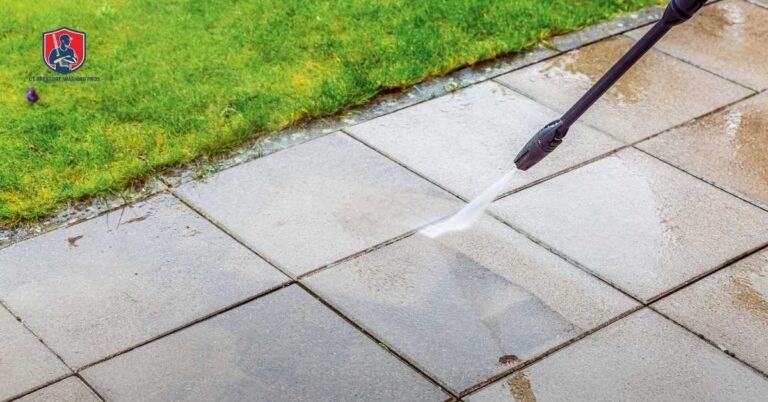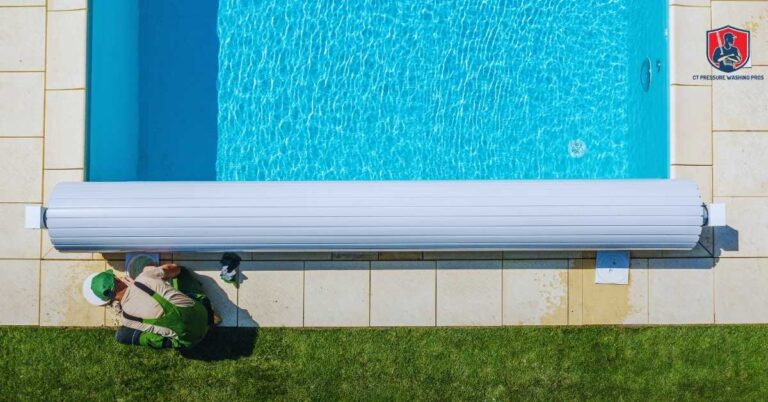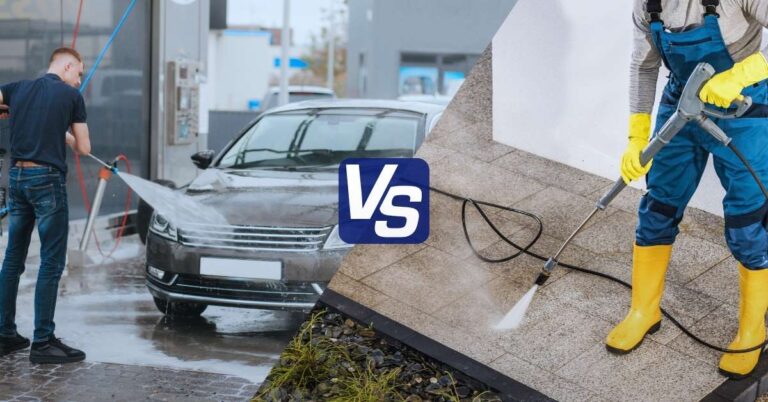Pressure washing a commercial building isn’t just about improving its appearance—it’s about protecting your investment. Dirt, mold, and pollutants build up over time, damaging paint, concrete, and metal surfaces if left untreated. A structured cleaning checklist helps you stay organized, avoid missed areas, and complete the job safely and efficiently.
This checklist covers everything you need—from preparation and safety steps to equipment and post-cleaning inspection. Whether you manage a storefront, office complex, or warehouse, following a clear pressure washing plan ensures consistent results, saves time, and helps maintain a clean, professional image for your property.
Table of Contents
Pre-Cleaning Preparation You Need to Follow
A short, focused checklist makes setup faster and safer. Use these key steps before starting any commercial pressure washing job:
- Inspect the property: Look for cracks, peeling paint, mold growth, or loose materials.
- Identify sensitive areas: Note vents, lights, signs, and electrical boxes that need protection.
- Repair or flag problem spots: Fix damaged surfaces or mark areas to avoid high pressure.
- Clear the area: Move furniture, vehicles, trash bins, and obstacles out of the cleaning zone.
- Cover what can’t be moved: Protect plants, outlets, doors, and windows with plastic or tarp.
- Post warning signs: Use cones or barriers to keep people out of the work area.
- Confirm water source: Check for consistent pressure and enough hose length.
- Plan for runoff: Make sure drainage is clear and compliant with local rules.
- Check weather conditions: Avoid windy days or extreme temperatures for best results.
Once everything is inspected, cleared, and protected, the site is ready for washing.
What Equipment and Supplies Will You Need
Having the right equipment and cleaning supplies saves time and prevents damage. Each surface type requires a specific pressure range, detergent, and attachment. Before starting, double-check that everything is working properly and ready for continuous use.
- Pressure washer: Choose the correct PSI and GPM for the job. Use higher pressure for concrete and lower pressure for painted or delicate surfaces.
- Nozzles and tips: Keep multiple spray tips on hand—wide-angle for rinsing and narrow-angle for tough buildup.
- Surface cleaner: Ideal for large flat areas like sidewalks, parking lots, and entryways. It provides even results and reduces streaks.
- Extension wands: Reach higher areas safely without using unstable ladders.
- Detergents and degreasers: Use biodegradable cleaners for dirt, mold, or oil stains. Follow the manufacturer’s dilution instructions.
- Water hoses and connectors: Check for leaks and proper fittings to maintain consistent flow.
- Personal protective equipment (PPE): Wear gloves, goggles, non-slip boots, and ear protection to stay safe during prolonged work tasks.
- Drainage tools: Have mats or barriers ready to control runoff and prevent it from entering storm drains.
Once your equipment is set up and tested, you’re ready to begin the actual cleaning process.
Safety and Compliance
Safety and environmental care are as important as the cleaning itself. Following the right precautions prevents injuries, property damage, and legal issues. Every team member should understand the risks and follow consistent safety steps before and during the wash.
- Wear proper protective gear: Use gloves, goggles, non-slip boots, and hearing protection. These prevent injuries from debris, chemicals, and high-pressure spray.
- Inspect electrical points: Cover outlets, switches, and exterior lighting to avoid electrical hazards. Never spray water directly on power boxes or exposed wiring.
- Use stable footing: Avoid working from ladders whenever possible. Use extension wands or scaffolding for higher areas.
- Control runoff: Prevent wastewater from entering storm drains. Use containment mats or filters to collect and dispose of it safely according to local regulations.
- Secure the work area: Mark the perimeter with cones or caution tape to keep pedestrians and vehicles away.
- Handle chemicals responsibly: Mix detergents according to instructions and store them away from direct sunlight or heat.
By maintaining these simple precautions, you protect workers, customers, and property while staying compliant with environmental standards. This ensures every cleaning job is safe, legal, and professional from start to finish.
Five Simple Steps Cleaning Process
Follow this simple five-step cleaning process to keep every part of a commercial building clean, safe, and well-maintained.
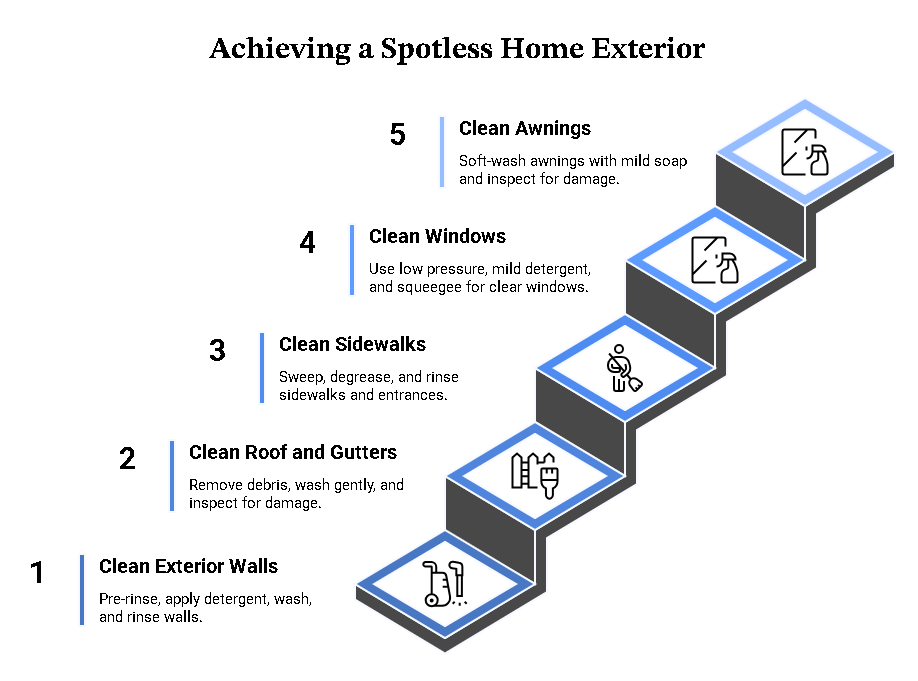
1. Exterior Walls
- Pre-rinse to remove loose dirt and dust.
- Apply detergent from the bottom up to prevent streaking.
- Let it sit briefly to loosen grime and mildew.
- Wash from top to bottom using slow, even strokes.
- Rinse thoroughly and check for missed spots.
2. Roof and Gutters
- Use a low-pressure or soft-wash setting to protect roofing material.
- Remove leaves, branches, and buildup before washing.
- Clean gently and flush gutters and downspouts to clear clogs.
- Inspect roof edges for leaks or lifted shingles after cleaning.
3. Sidewalks, Entrances, and Parking Areas
- Sweep or blow away dirt and debris before washing.
- Apply degreaser to oil stains or gum spots and let it dwell briefly.
- Use a surface cleaner for even coverage and better results.
- Rinse the entire area thoroughly and let it dry before reopening.
4. Windows and Glass Panels
- Use low pressure and a mild detergent to prevent streaks or scratches.
- Rinse with clean water.
- Squeegee dry for a clear, streak-free finish.
5. Awnings and Signage
- Switch to soft-wash mode for gentle cleaning.
- Use mild soap and avoid harsh chemicals that can cause fading.
- Rinse gently and inspect for any wear or damage once dry.
This five-step process keeps every surface of your commercial property clean and well-preserved while maintaining a professional appearance year-round.
Post-Cleaning Tasks
Once the washing is done, the job isn’t over yet. A few simple follow-up steps help ensure the property stays clean longer, the site is safe to reopen, and everything is documented properly.
- Inspect all cleaned areas: Walk around the building to confirm every surface is evenly cleaned and free from streaks or residue. Check corners, ledges, and gutters where dirt often settles.
- Touch up missed spots: Rewash small areas if needed, especially where grime or stains remain.
- Rinse nearby plants and surfaces: If any detergent overspray reached landscaping or walls, rinse them with clean water.
- Clean up and pack equipment: Coil hoses, empty detergent containers, and wipe down tools. Check for leaks or wear before storing.
- Dispose of wastewater safely: Follow local rules for disposal—never pour chemicals or dirty water into drains or grass areas.
- Remove protective coverings and barriers: Take down tarps, signs, and cones only after surfaces are dry and safe for public access.
- Document the work: Take before-and-after photos, note detergents and settings used, and record the date for your maintenance log.
A short, organized wrap-up keeps the site professional, prevents callbacks, and helps plan future maintenance schedules effectively.
Conclusion
Keeping a commercial property clean isn’t just routine maintenance—it’s smart protection for your investment. A consistent pressure washing plan helps prevent surface wear, mold buildup, and costly repairs down the line. By following this checklist, you stay organized, work safely, and achieve professional results every time.
Regular inspections, proper tools, and safe cleaning practices keep your building looking sharp and lasting longer. Make this checklist part of your maintenance routine—it saves time, reduces liability, and keeps your property ready to impress clients, customers, and tenants year-round.
